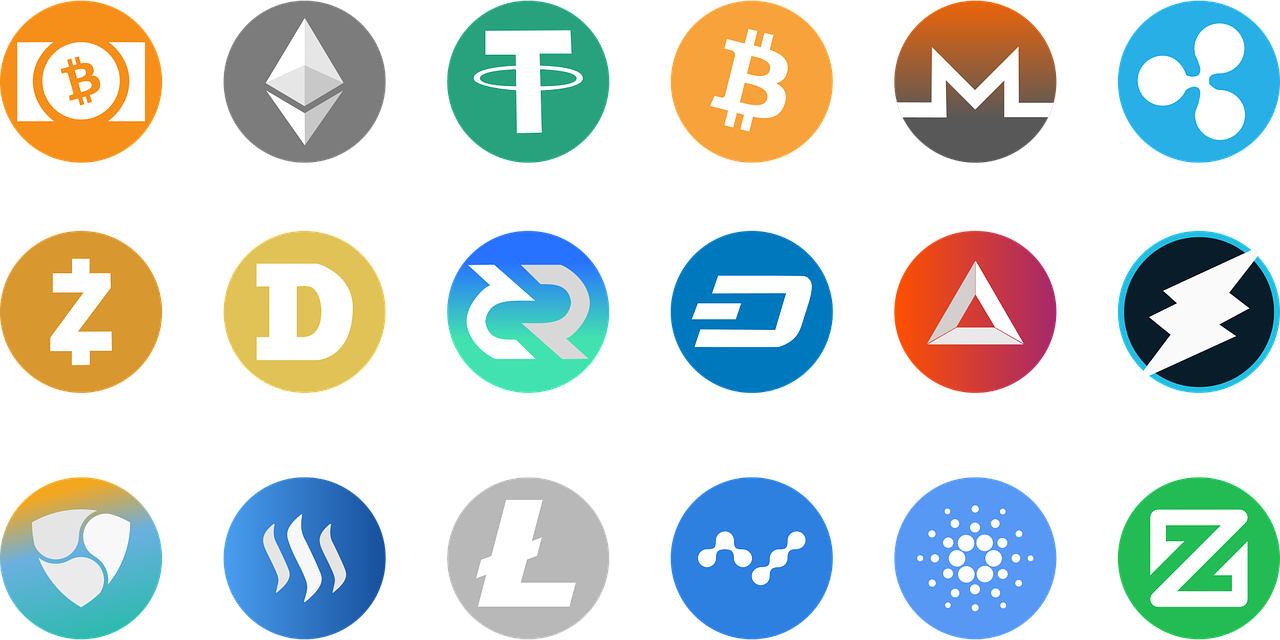Everything you need to get started with Altcoins
Social media sites such as twitter and the internet in general are rife with talks about cryptocurrencies. Even the mainstream media have specific publications with top notch editors specifically targeting news on cryptocurrency in general and altcoins to be specific. In fact, those who frequent the internet must have interacted with pop ups on altcoins or other crypto. So, it would be safe to mention that altcoins have become the talk of town as we edge closer to the digital currency era where the whole ball game on buying, selling and investing will be different. It would appear as though crypto or altcoins are the next big thing. Cryptocurrency has taken the digital money market to another level with new ones cropping up on a daily basis.
The increasing publicity of altcoins then brings to mind the question of what exactly altcoins are. Well, initially they were defined as other cryptocurrency other than Bitcoin. Today however, the definition has evolved and now refers to all cryptocurrency other than bitcoin and Ethereum. It draws from the term alternative.
The Success story of digital currency and what they mean
The success of digital currency has encouraged many entities to develop new cryptocurrency projects almost on a daily basis. Subsequently, thousands of altcoins have surfaced on the market. Investors are also becoming more enthusiastic and hopeful about altcoins and cryptocurrencies in general.

Bitcoin still remains the measure of all cryptocurrency available in the market today. This could be because it was the first to prove that cryptocurrencies can work in today’s economy. Altcoins and Bitcoin have more or less the same characteristics. However, they are distinguished by distinct differences.
For instance, while some altcoins have the same code as bitcoin, they have an increased mining time. Similarly, most altcoins have smart contract functionality unlike bitcoin. Another key characteristic of altcoins is that some have an uncapped limit regarding the number of coins that can be mined.
Examples of altcoins in the market today include Ethereum (ETH), Binance Coin (BNB), Solana (SOL), Cardano (ADA), XRP (XRP), Polkadot (DOT), Terra (LUNA), Dogecoin (DOGE), Avalanche (AVAX) and Shiba Inu (SHIB). They can be purchased from any reputable and trusted exchanges.
A more detailed Understanding Altcoins
The best way to understand what an altcoin means is by acknowledging that it stems from the words “alternative” and “coin.” Altcoins generally work in two distinct ways. The first is by functioning as a peer-to-peer system that allows a distinct activity worldwide. They can also function as a computer system. The system can be commanded to perform a given task globally.
That said, most altcoins owe their existence and popularity in the cryptocurrency world to bitcoin. They are a product of bitcoin’s technology, whitepaper and design mostly because it was the first cryptocurrency to succeed. However, this does not mean that they function the same way bitcoin does. Altcoins differ from bitcoin in their implementation, improvement and ability to work without bitcoin’s distinct technology.

For instance, bitcoin relies on the Proof-of-Work (PoW) consensus algorithm. It implies that miners have to add to the computing power. Many have pointed this out as its main disadvantage. It does not only require a lot of electricity, but also needs rather expensive hardware to function effectively. Eventually, a miner will receive BTC cryptocurrency in return for their contribution to the token.
On the other hand, altcoins rely on the Proof-of-Stake (PoS) consensus algorithm. It is the one thing that distinguishes all of them from bitcoin. Proof-of-stake consensus algorithm is way more eco-friendly. It also consumes less energy and does not need as much time to create blocks and even validate transactions. So, in many ways, altcoins are a better version of bitcoin.
Types of Altcoins
Since there are thousands of altcoins in the market today, it is better to classify them according to the type of uses. This will make it easier to understand the initial goal of altcoins and identify the most useful tokens. Remember that the uses and applicability of an altcoin will also determine its value.
Payment Cryptocurrencies
Digital payment cryptocurrencies are all about providing a peer-to-peer electronic cash system that can be used for different transactions. Hence, altcoins that are used as payment cryptocurrencies, have a customized block chain. The block chain can only allow it to be used as a medium of exchange.
Further, they prioritize speed and low transactional costs and can therefore not be used to run smart contracts. This is what the block chain of payment cryptocurrencies are designed to do as a digital asset. Similarly, these types of tokens have a finite supply in the market. As a result, their value stems from remaining finite. The more the supply, the lower the value of a payment cryptocurrency. Examples of payment cryptocurrency altcoins include Ripple (XRP) and Dogecoin (DOGE).
Utility Tokens
The goal of utility tokens as a digital currency is to provide value or usefulness to the holder. Here are some examples and types of utility tokens.
Financial Tokens
With a financial token, one can pay to access a cryptocurrency exchange platform. Their holders also qualify for discounted fees, which is why they are also referred to as exchange tokens. A good example is Binance’s BNB Coin.
In addition, some financial tokens act as proof of fractional ownership. It implies that every token represents ownership to another security or asset. Security tokens are easier to understand if you know anything about crowdfunding.
Infrastructure Tokens
Infrastructure tokens are majorly used in processing smart contracts, transfers or Dapps on a given network. They act as payment for the transaction fees of these activities. A good example is Ether, the native token for the Ethereum network. Other examples are Cardano (ADA) and Solana (SOL).
Governance Tokens
Cryptocurrency networks and mainly decentralized systems. To maintain this, governance tokens allow holders to vote on significant changes within a cryptocurrency network. Thus, you can decide on proposals as a community instead of focusing the decision-making power in a small group. A good example is MakerDAO (MKR)
Service Tokens
With a service token, you can perform different tasks on a network during a cryptocurrency project. A good example is Storj, which acts as an alternative to Google Drive, Dropbox, or Microsoft Onedrive.
Media and Entertainment Tokens
These tokens are majorly used for content, games, and online gambling. An example is Basic Attention Token (BAT).
Stablecoins
The goal of stablecoins is to maintain a stable market price by attempting to tackle price fluctuations. It achieves this by linking the stablecoin’s market value to some external reference. In most cases, it’s usually a fiat currency like the USD. However, some are linked to products including a precious metal like gold.
To stabilize the price, it collateralized it with some underlying asset, either real, fiat or virtual. Since they are backed by assets, stablecoins can maintain their prices. Ultimately, they can avoid excess volatility, which is a key characteristic of the cryptocurrency market. You should also note that some stable coins use algorithms to balance supply and demand to maintain a stable price.
Central Bank Digital Currencies (“CDBC”)
Unlike other altcoins, Central Bank Digital Currency or Central Bank Digital Coin, are issued by a central bank of a country or region. Therefore, they are centralized but still act as virtual currencies. They are usually issued in token form or with an electronic record linked with the currency. The token remains pegged to the domestic currency of the country or region that issues it.
The advantage of these currencies is that they involve less risk and fraud since the central banks maintain full authority and regulation over them. However, most countries have not adopted this system yet. Even in the countries where it’s active, it’s still only in the initial stages. Whether or not its popularity increases overtime remains to be seen.
The good news is that most central banks have researched and even experimented with these currencies. A good example of these are the Bank of Canada, the Monetary Authority of Singapore the Riksbank and the People’s Bank of China. Implementing these currencies will answer the question on whether private cryptocurrencies are better than centralized ones.
CBDCs differ greatly from situations where a country uses an existing cryptocurrency as legal tender. You probably heard of the case from El Salvador in September 2021, when they used an existing cryptocurrency as legal tender. CBDCs have a centralized and permissioned blockchain and supply that is fully controlled by the Central Bank. Their major goal is to provide an alternative for lower-cost value digital transfer.
Investing in Altcoins
The question on whether or not to invest in altcoins will depend on the type of altcoin. The thousands of altcoins in the market means that you have to research and understand everything about specific ones. Knowing a thing or two about altcoins will ensure that you make more informed decisions on which altcoin to invest in.

Like every other sector out there, you will find altcoins that have high investment value and others that do not. Altcoin trading is popular in many exchanges worldwide and everyone has an opinion or two. The trick is to consider the qualities that make them excellent investments and those that don’t.
Advantages of Altcoins
One obvious con to investing in altcoins is that they are focused on improving bitcoin. It implies that most altcoins in the market are a better version of bitcoin in some way. As the first cryptocurrency, bitcoin has faced a number of challenges in the digital currency world. Thus, the development of altcoins emerged as an idea to solve the issues and shortcomings that came with bitcoin.
Another advantage of altcoins is the availability of many types in the market. Just as the name suggests, they are supposed to be an alternative to Bitcoin. Some altcoins such as stable coins have shown great potential in meeting the goal that bitcoin was meant to. Stable coins have proven that cryptocurrencies can be used for daily transactions.
Furthermore, altcoins have experienced tremendous growth when it comes to market cap. A good example is Ethereum’s ETH and Cardano’s ADA tokens. These tokens have taken center stage in proving that cryptocurrencies can be used in real life cases. So, it makes sense to assume that they will only get bigger with time.
Finally, altcoins play a critical role when it comes to portfolio management. With them you can adequately diversify your portfolio and make it even more attractive. As an investor, they will ensure that you have a wide variety of investment opportunities. Besides, their potential when it comes to return-of-investment is relatively high.
Disadvantages of Altcoins
Despite all the advantages that altcoins have to offer, they also come with a few disadvantages. Understanding these disadvantages will make it easier to manage your investment portfolio. Some articles on this blog will provide a more detailed outlook of these downsides.
Market cap
The first obvious disadvantage is that they have a lower market cap than bitcoin. So far, no altcoin has come even close to having as much market as bitcoin does. Thus, bitcoin has remained the dominant cryptocurrency in the market. Don’t let this discourage you though because they have shown a high potential for growth. Overtime, they might catch up with bitcoin or even beat it.
Availability
Another obvious disadvantage of altcoins is the availability of thousands in the market. When it comes to making investment decisions, exclusivity goes a long way. With so many altcoin tokens in the market, it can be very challenging to make an investment decision. You literally have thousands of options to invest in. To be quite honest, this makes it very difficult to decide which one would be more lucrative as an investment.
Risks involved
Further, investing in altcoins is way more risky than bitcoin investment. Altcoin prices are known to be extremely volatile unlike bitcoin. The value of altcoin can increase or decrease incredibly fast overnight. So, the chances of you losing your money is just as high as the chances of making it.
Finally, altcoins are fairly new to the market and more are being developed each day. However, even some altcoins that have been in the market for longer have failed to meet their initial goals. As a result, investors have lost huge amounts of money since an altcoin with no value is nothing more than a bad investment.
The bottom-line of investing in altcoins thus remains that it depends on the specific altcoin you go for. It pays to do your research and observe how the value and prices of altcoins increase and decrease. This will ensure that you make the right decision and manage your investment profile better. Remember that knowledge is power and anyone who has made it big in the investment world will tell you this.
What You Need to Know Before Investing in Altcoins
Most people usually have a specific altcoin in mind when they decide to invest in altcoins. As great as this might be, you still have to find out as much as you can about this specific altcoin to be successful. While altcoins will differ from one to the other, there are specific features or characteristics that you can look out for.
Performance in the Cryptocurrency Market
The first thing to consider about the altcoin you are about to invest in is its performance in the market. There is no point getting stuck with a non-performing altcoin token. You might end up losing a lot of money in the process. So, you should conduct a lot of research to find out if for instance, it brings many improvements within the market. Remember that the goal of altcoins is to improve on the issues or shortcomings of bitcoin. So, if it does not achieve this goal then you can assume that it has no real market value.
Applications in the Real World
Well, the success and value of any altcoin can only be determined by their potential to be applied in the real world. Thus, before you hit that buy button, you should ask yourself whether the token has a real-world application. Some tokens such as Ethereum have grown so much because they have proven to have real world applications. You can see this from their prices and value in the investment market. These tokens are fast catching up to the popularity that only bitcoin has enjoyed in the cryptocurrency market.
Uses of the Altcoin in Question
The value of any altcoin can also be determined by how it is used. The more useful it is in the market, the more valuable it’s likely to be. Similarly, you should also find out whether or not there is a dedicated team and community surrounding it. A dedicated team and community can ensure that a token becomes as popular as possible in the investment world. With popularity also comes value and higher prices. Most investors will go for the most popular token since it will have more uses.
Initial Mission
If you look at the trends of cryptocurrencies, you will notice that the most successful ones are those that have met their initial goal. Some have failed and caused investors to lose their money as they achieved no value. So, to avoid losing money, you should only invest in an altcoin that has achieved its goal. Similarly, you should find out how far the technology behind it could develop within the next few months or years. This will ensure that you invest in an altcoin with a potential for growth.
Other things to look out for before investing in Bitcoin
The return you receive on your investment in altcoin will vary from one token to the other. Every investment involves some level of risk and the same can be said for altcoins. According to some investment experts, the best time to invest in an altcoin is during its initial stages. However, it still pays to find as much information as possible about these tokens. This is where the blog comes in.
Another secret to altcoin investment regards how much of your hard earned money you invest. Most crypto pundits advise that you should never risk more money than you are willing to lose. Knowing your limits when it comes to investment will save you a lot of pain that comes with bad investments. Altcoin speculation and estimation can be determined by following the right altcoin price prediction. It’s also important to find a trading strategy that works before investing heavily in altcoins.
Other than this blog, you can find many other online resources that will be the difference between an altcoin pump and an altcoin crash. This blog provides an in-depth analysis of the altcoin market. It also lists the most popular or successful altcoins from time to time, which you can take into consideration in your investment journey.

